Galleria Midobaru: A Beppu Art Oasis
The lobby of Galleria Midobaru (Photo: Jennifer Pastore)
Japan has no shortage of creatively inspired art hotels, but one that should be on every connoisseur's list is Beppu's Galleria Midobaru. Opened in December 2020 in the Kyushu city, this elegant retreat won a 2021 Good Design Award for its seamless fusion of geography and culture. Its artworks were created specifically for the site by 12 Japanese individuals and art groups, who incorporated materials and themes unique to this area renowned for its hot springs. The collection was personally curated by Jun'ya Yamaide, founder of Beppu Project, an NPO putting Oita Prefecture on the map as a hub for contemporary art.
Galleria Midobaru is situated at the base of Mount Tsurumi overlooking Beppu Bay. It consists of two sleekly modernist concrete buildings: a five-story structure with 35 guest rooms is connected to a two-story restaurant by a network of roofed outdoor corridors. The Beppu architectural firm DABURA.m, led by Takafumi Mitsuura, is responsible for the adobe-like design, which features floor-to-ceiling windows facing the ocean. The interior is chicly outfitted by the Osaka design unit graf, which also provided original signage. The hotel can be reached with a 15-minute taxi ride from Beppu Station.

Akiko Nakayama's video installation "Medium" (2020) greets arriving guests in the foyer. This three-screen work shows the boiling volcanic mud of Oni-ishi Bozu Jigoku, a Beppu site famed for its bubbles of ooze said to resemble the smooth, round heads of Buddhist monks. Running roughly four to seven minutes, each video plays at a different speed and captures the geyser-filled landscape in different weather conditions.
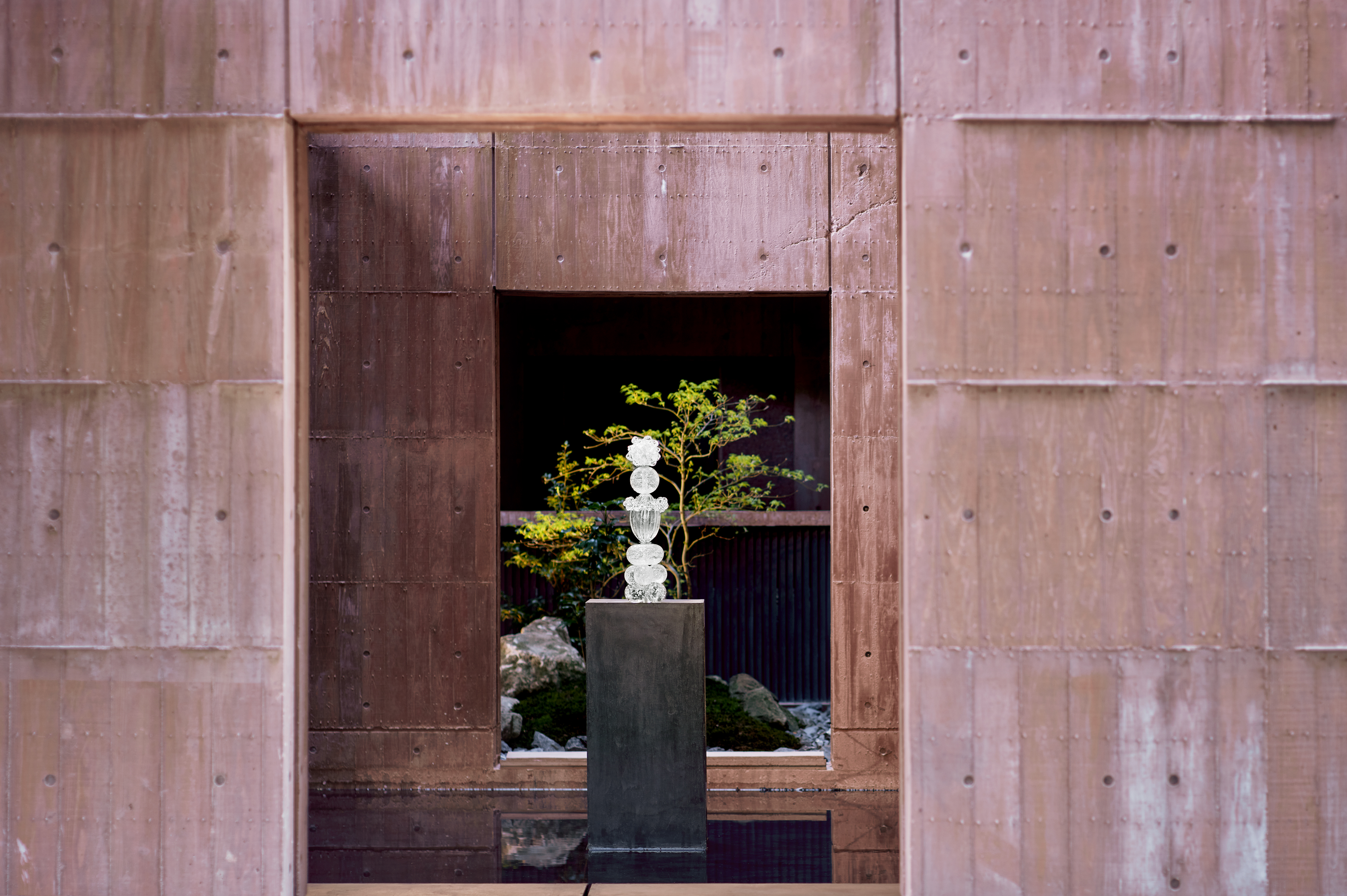
Mika Aoki's glass sculpture stands at the foyer. While Aoki typically creates delicate works with motifs of tiny life forms such as cells and fungi, “Fluidity” (2021) is a sturdier piece that takes a macro view with the universe as its theme.

Two works by the prominent installation artist Shinji Ohmaki punctuate the lobby space. "Gravity and Grace – Yudama" (2020) is a stainless steel ball 150 centimeters in diameter suspended from the soaring ceiling. Its globular shape recalls the bubbles of hot spring water known as yudama in Japanese. A closer inspection reveals the work's surface is covered in a menagerie of local motifs, such as Beppu Tower and indigenous flora and fauna. Inside the frame, a set of LEDs with computer-controlled brightness generates patterns of light and shadow around the room. Illumination shows using the sculpture take place every morning and evening. "Echoes Crystallization" (2020) is the sphere's companion. This round, white Nihonga painting is made with crystal powder on Mino washi paper. Acting as the moon to the "sun" of "Gravity and Grace – Yudama," "Echoes Crystallizatoin" depicts Kyushu plant species that are either extinct or on the verge of dying out. These pieces function as a pair to express the "light and shadow" of the region as a tourist destination, alluding to the double-edged sword of development and destruction.
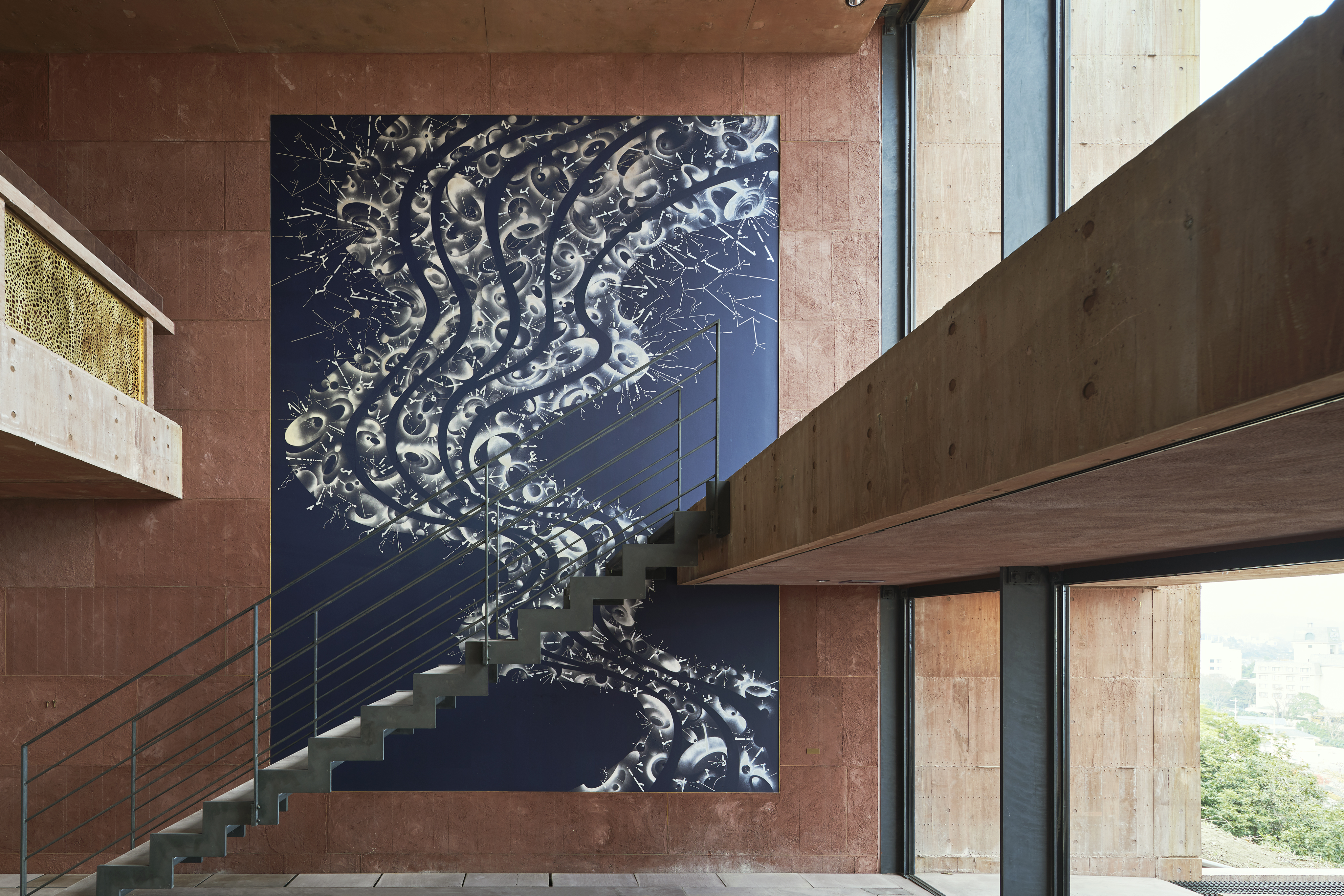
Hiraku Suzuki creates works including paintings, sculptures, and films about the relationship between drawing and language. His painting "Yuragi kara Hikari e" (2020), which translates to "From Fluctuations to Light," is nearly five meters high, extending from the first-floor lobby up to the second level. Suzuki painted the work in silver ink directly onto the wall. Its undulating, Milky Way-like imagery suggests that the universe could be made up of this same wavering "yuragi" pattern, which is used to describe the movements of hot spring steam.
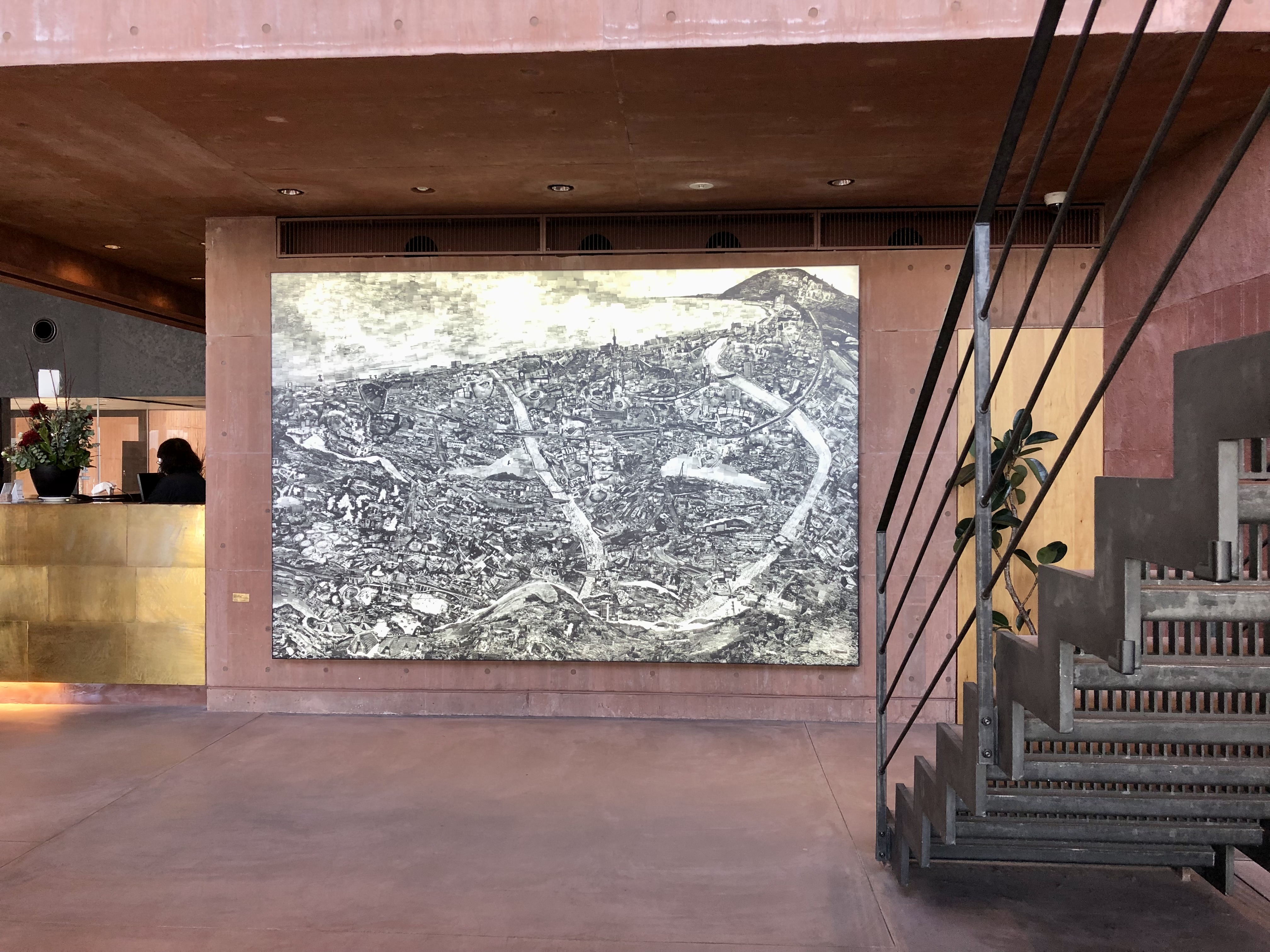

"Diorama Map 'Beppu'" (2020) by Sohei Nishino is a tribute to Beppu's long tradition of public bathing. More than three meters wide and two meters high, the black and white photo collage comprises a map of the city in some 22,000 images – mostly showing people at public bath houses. There are said to be around 100 of these facilities throughout Beppu. Nishino wanted to document this unique culture, as it is currently disappearing as baths close or become privatized. Nishino's process of creating the work can be viewed in a video.

The hotel's open-air corridors were inspired by downtown Beppu's famously intricate alleyways. Shafts of shadow and sunlight interact with the geometry of the resort's architecture.
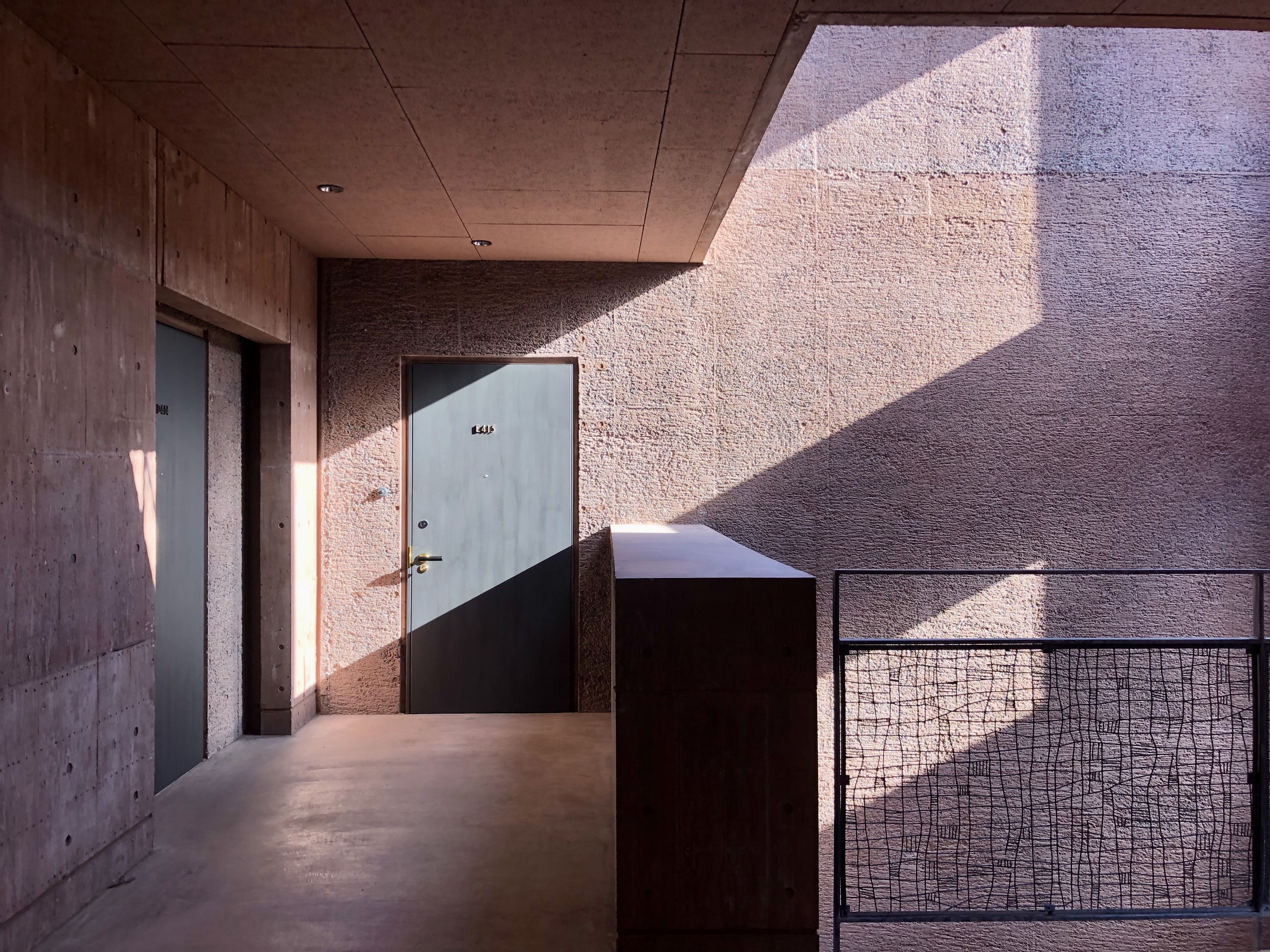

The distinctive reddish hue of the walls and ceilings comes from iron powder added to the concrete to reproduce the natural color of excavated Beppu soil. Its complexion changes with the climate and the passage of time. Galleria Midobaru prioritized local materials with a low environmental impact in its construction process. The concrete slabs that form the building were cast in molds made from Oita cedar. Plaster used for the lobby was created with oyster shells from the surrounding Setouchi Inland Sea.

Figurines from Olectronica's "Mou Hitotsu no Fukei" (One More Landscape) series are dotted around the shared spaces of each level of the hotel. They were made by the Oita-based art unit Olectronica (Ryo Kato and Junpei Kodama), which produces diverse works ranging from sculptures and large public installations to these diminutive carvings imagined as "travelers." Nine of these works made from materials including wood, stone, and metal can be found at Galleria Midobaru.
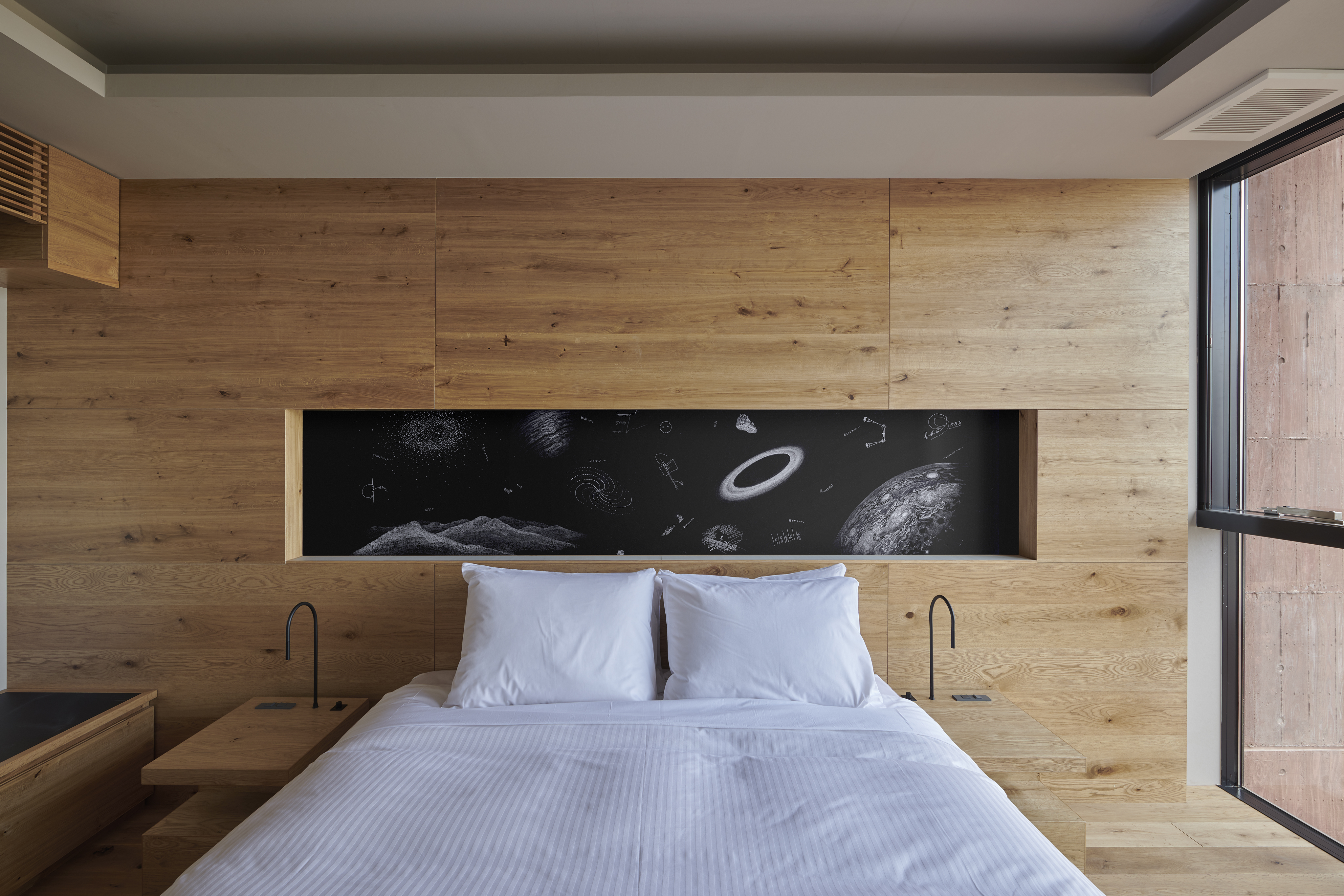

The collective mé, known for its head-turning installations, is a rising star in the Japanese contemporary art scene with recent shows at major museums and galleries. For one of the guest rooms, mé created a black-and-white illustration of the cosmos filled with celestial bodies. The work – a meditation on perspective – has pride of place above the room's bed section.
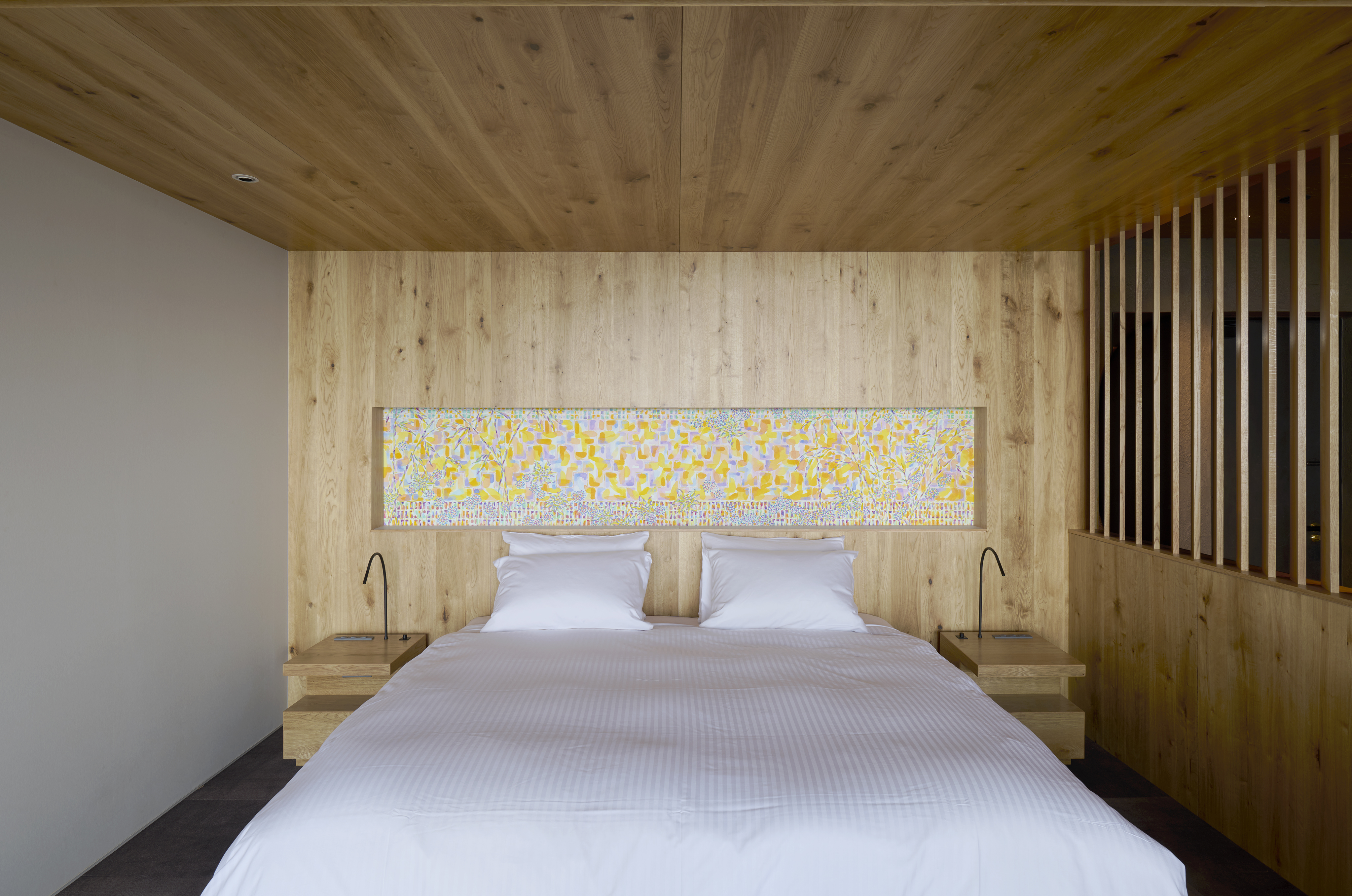

The illustrator Izumi Ine splits her time between Tokyo and Beppu. She has collaborated with art museums and fashion brands and participated in Beppu's Kiyoshima Apartment artist residency. Her light and lively "Yu wa Kiku Iro" (The Color Hot Water Hears), in yellow and purple pastels, is another work appearing above a bed.
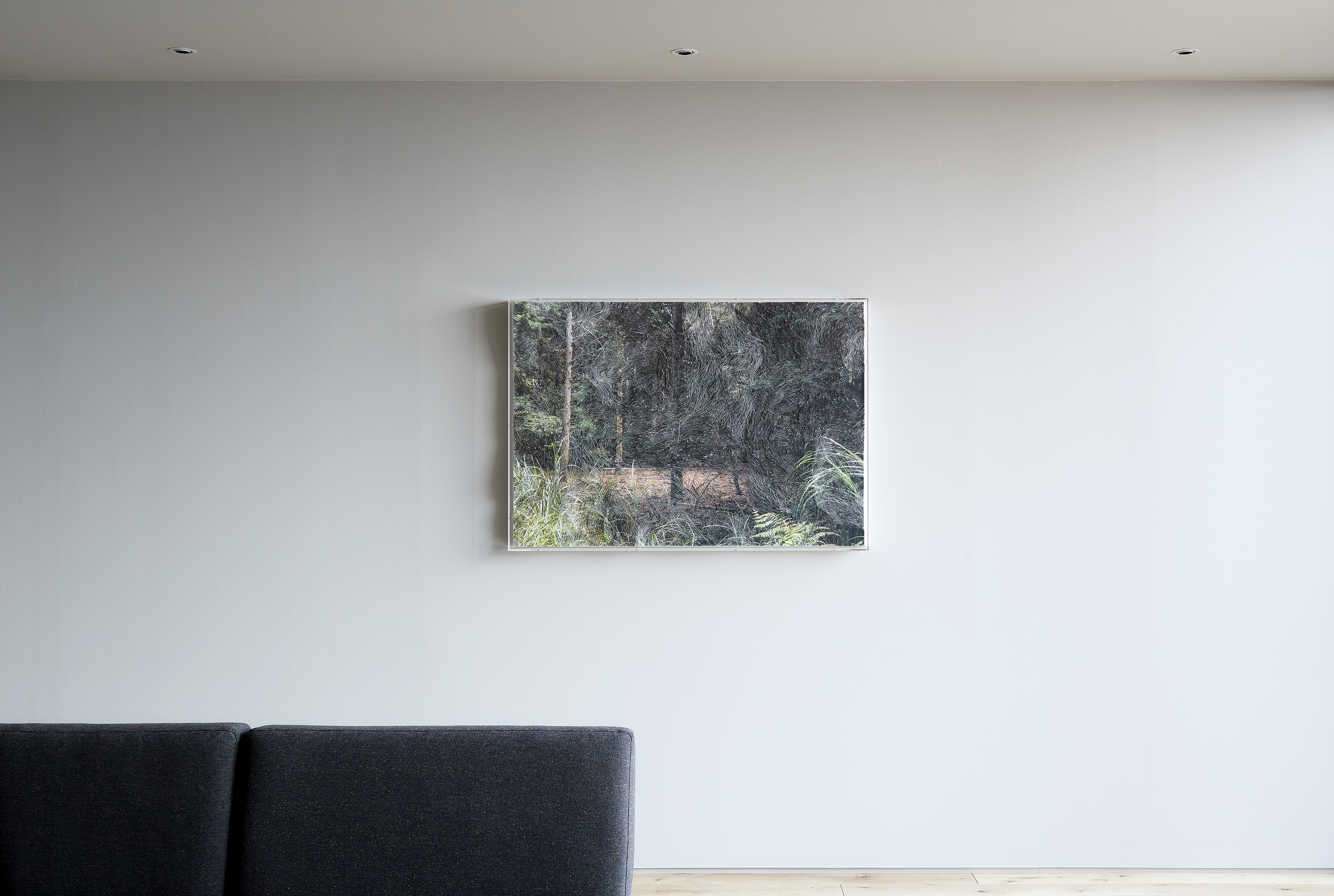
Rooms on the third floor present the work of Nerhol (Yoshihisa Tanaka and Ryuta Iida), a pair renowned for its carved photo sculptures. Nerhol typically creates portraits of people from intricately layered and cut photographs, but for Galleria Midobaru it produced works depicting Beppu's forests and hot springs with the same intriguing realism and rich textures.
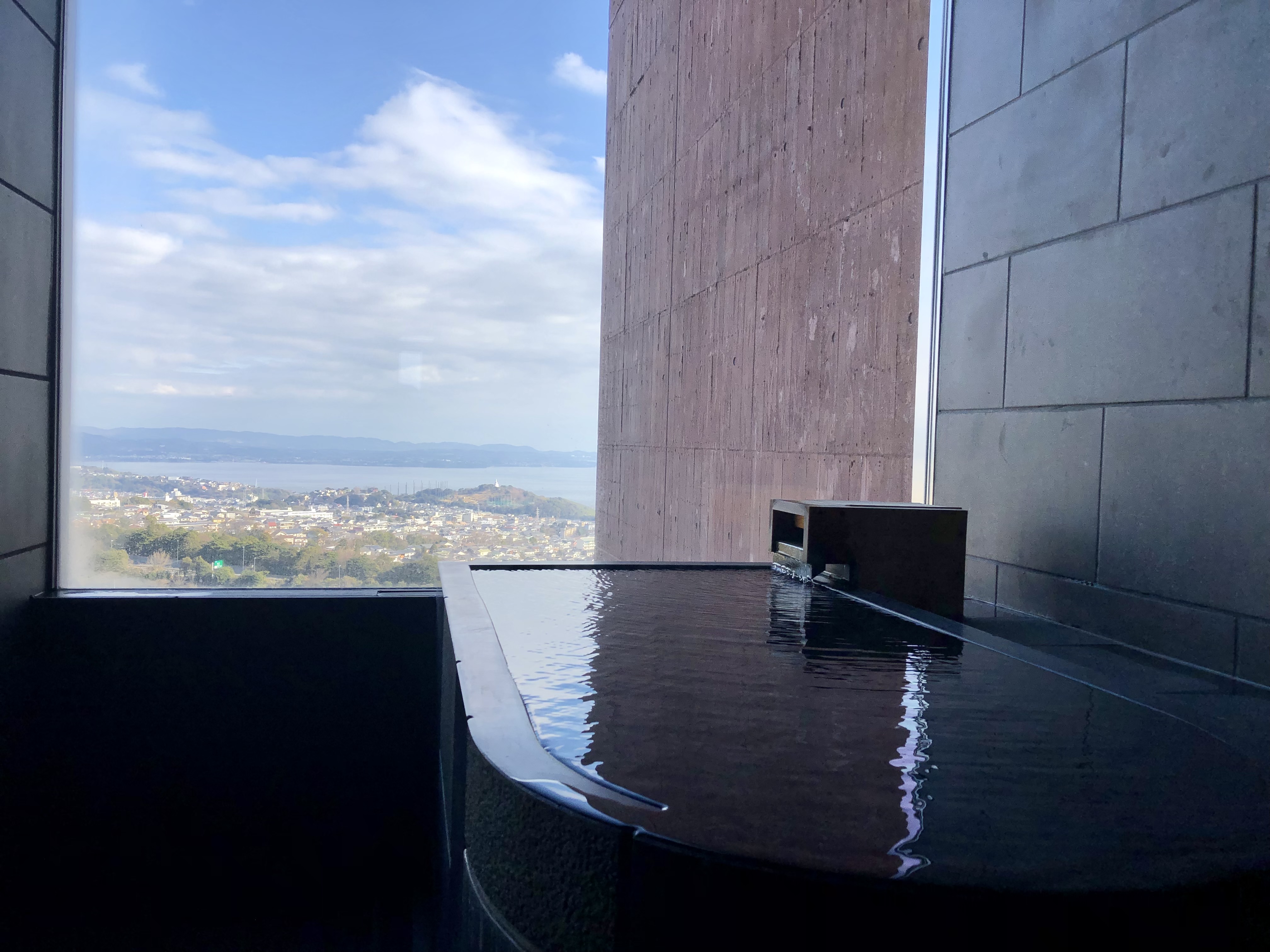
Each spacious guest room comes with a bed area, a lounge/living space, a balcony overlooking the bay, and its own luxurious stone bathtub. The basin is continuously filled with water sourced from Horita Onsen, a local sulphur spring that has been soothing travelers for centuries with water said to relieve ailments like stiff muscles and fatigue. The bath faces an enormous window and opens to the balcony, creating a splendid feeling of airy openness.

Another highlight of Galleria Midobaru is the dining experience. The in-house restaurant, The Peak, is open to guests as well as non-guests and serves breakfast, lunch, and dinner, offering both courses and à la carte meals made with fresh local ingredients in a refined setting. The Peak specializes in grilled dishes and uses an Italian brick oven that preserves the nutrients of the food. Oita craft beers, wine, sake, and other spirits pair well with the Western-style meat and seafood.

Works of art can also be found inside The Peak. One notable piece is a boulder, affectionately called "Iwao-kun," that was excavated during the hotel's construction. Iwao-kun was carefully selected from among the many rocks unearthed at the site. He has his own seat at one of the restaurant's tables, and diners are welcome to join him. Michihiro Shimabuku, the artist responsible for Iwao-kun and an important contributor to Beppu Project, explained that during his international travels he has stayed at countless, mostly forgettable hotels, so he wanted to give Galleria Midobaru visitors a truly memorable experience.

Masamitsu Katsu is an award-winning Osaka-born artist who moved to Beppu and has been involved with the local art scene for more than a decade. The Peak displays five of his stunningly photographic pencil drawings on paper, which depict the natural wonders of Beppu and the surrounding area. The work above shows the rippling waters of a Shinto shrine's natural spring said to be immune to drought.

Hot Spring Bar on the hotel's second level offers drinks and desserts. This space is envisioned as a hot spring-esque gathering place where people from near and far can come together. The boards installed at the bar were colored with water from Beppu's Tsukahara and Horita hot springs. Vividly colored photographs on the wall capture images from "jigoku meguri" (hell tours) around local thermal sites. The bar serves up creatively inspired drinks such as the bright-orange "Blood Pond Hell" citrus cocktail. Other delectables like cream puffs, gelato, and chai lattes are available as well.
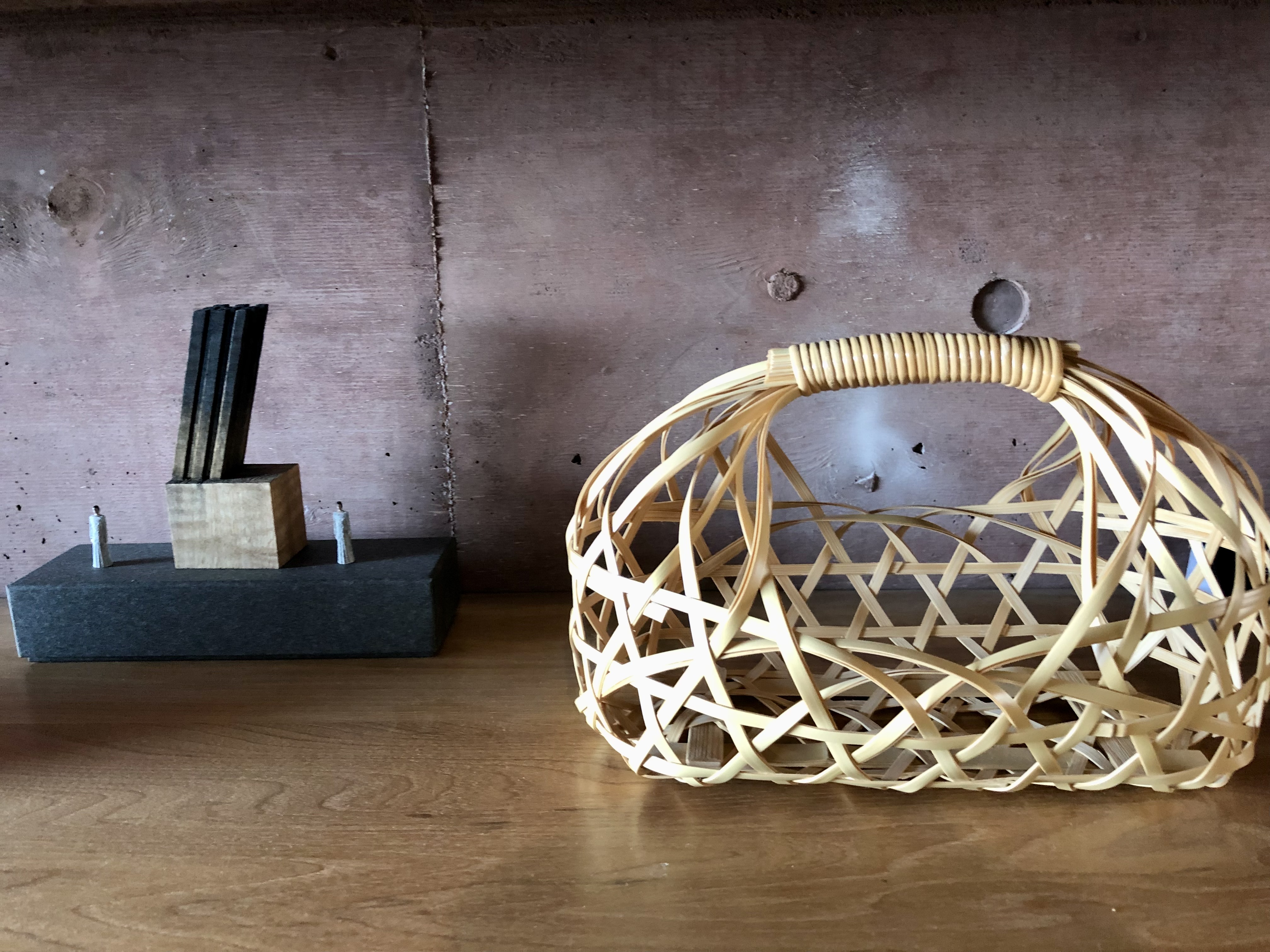
Galleria Midobaru is a world-class, museum-like hotel that keeps its unique location in mind, creating a one-of-a-kind experience for the visitor. From its architecture to its artworks to its cocktails, it lets its local roots shine while achieving a retreat experience that is both relaxing and stimulating for guests from all over. When asked why he wanted the hotel to focus on art, CEO Taichiro Hayashi, who comes from a Beppu family of inn keepers, explained that he believes "art has an international appeal with the power to transcend language." Guests can enjoy free guided tours of the artworks each day from 4:00 p.m.



